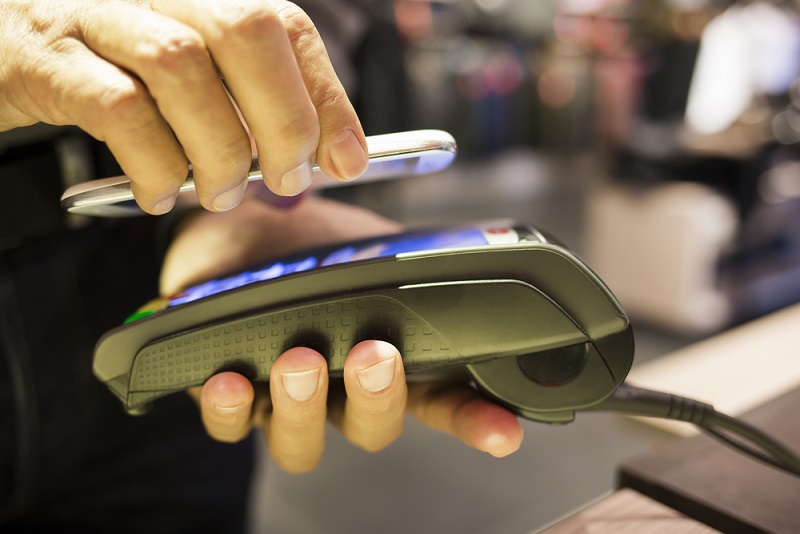Young members are the future of credit unions.
Yet, in many nations, the average age of credit union members is in the mid-to-to late 40s, according to the World Council of Credit Unions in Madison, Wis.
In the U.S., U.K. and Australia, the median member age is 47, while the median age of credit union members in Canada is 53. Nations with the youngest cooperative members are Afghanistan (25), Malawi and Kenya (30), Jamaica and Cameroon (35), Guatemala (36) and Ghana (38).
With more than 208 million credit union members worldwide, the World Council is challenging the global cooperative movement to add 50 million new members by 2020, particularly young members. There are 2.5 billion millennials, those born from 1980 to 2000, who make up about a third of the global population, according to a study by mass media company Viacom.
To help credit unions achieve the 50 million goal, a new World Council report, “Our Global Challenge: Young Adult Membership Growth,” highlights 12 strategies that have helped credit unions in the U.S., Canada, Latin America, Australia, and Africa attract a new generation of members.
1. Provide Online and Mobile Core Services
Convenience and ease of use can help attract young members. While they will use all banking channels, millennials will most frequently use mobile, online, ATM and a branch, in that order.
Young members want to apply for accounts and loans, deposit checks, transfer funds, pay bills and receive alerts via online and mobile, and their expectation is for each service to be easy and take little time, according to the World Council report.
However, delivering those services can be very expensive.
To afford the convenience of online and mobile platforms, credit unions in Poland, Brazil, Mexico and the U.K., pool their information technology investment to build shared payment platforms for online and mobile channels. They also do the same for ATM networks and shared branching, just like cooperatives do in the U.S. and Canada.
To reach young members who live in remote regions of Mexico, Caja Yanga Credit Union employs field officers who travel by motorbike to deliver financial services using smartphones and portable printers. This World Council's model, coined Semilla Cooperativa, brought banking to more than 250,000 Mexicans in three years. About 44% of these new members are between 18-35 years of age, according to the World Council.
 2. Leverage Payment Services
2. Leverage Payment Services
While many young people around the world have no connection to a financial institution, they often use commerce or payment systems such as PayPal or Google Wallet.
“For the 18-24 age group, many of their bills are divided amongst themselves, so mobile peer-to-peer payment solutions, such as M-PESA in Kenya are in demand,” according to the World Council's report.
E-Kenya, a branchless credit union in Kenya, meets young adult demand by operating a mobile service that offers 24/7 accessibility to financial services.
Based on the World Council's developed network that connects credit unions to the Safaricom's M-PESA platform, members are able to make payments and access their accounts using their mobile phones. With more than 3,000 M-PESA agents throughout the country, withdrawing cash is more accessible and convenient for members living in rural areas.
3. Design Products for Life's Changes
When millennials enter young adulthood they often pursue their education, launch careers, buy a car and some may even invest in a starter home. Other young adults may get married and start having kids.
However they decide to begin their life journey, millennials need to establish good credit to secure financial products and services. Because they are making little or no money, developing a solid credit history can be challenging.
And that's where credit unions can step up to make young adults lifelong members.
The $2.2 billion Educational Employees Credit Union in Fresno, Calif., for example, offers young members age 18-24 with MyCash program, which includes free checking and bill payment, no minimum balance, no monthly service fees and free use of ATMS, according to the World Council's report.
The credit union also offers a student VISA card with a credit limit and no annual fee, low-interest computer loans and auto loans at a rate discount based on their grade point average in school.
 4. Stand Out By Doing Good
4. Stand Out By Doing Good
Several studies have confirmed that young adults prefer to belong to institutions with ethical reputations that take pride in doing good.
The $17.5 billion Vancity, one of Canada's largest credit unions in Vancouver, set out a new vision for redefining wealth. According to the World Council report, “the cooperative asked and answered mission-critical questions such as “What are we here for? And, what business are we really in?” The answers: “We are in the bank and 'feel good' business, and we are in the member-prosperity and community impact business.”
To demonstrate that business model, Vancity launched three cash mobs to support community businesses, which also targeted 25-34-year-old prospects to become members. The cooperative exclusively promoted the cash mob events through social media sites and local bloggers. The Canadian cooperative also produced a video to get the word out.
Since implementing the “we make you good money by putting money to good” initiative three years ago, Vancity attracted 70,000 new members with a 14% increase in deposits and lending, according to the World Council report.
 5. Create a Culture of Wow!
5. Create a Culture of Wow!
You know the financial services industry is in trouble when 71% of millennials said they would rather go to the dentist than listen to what banks are saying, according to the Brookings Institution research paper, How Millennials Could Upend Wall Street and Corporate America.
Realizing that young adults expect things fast and easy and respond more to experience over product, the $1 billion San Francisco Fire Credit Union decided to substantially improve its member experience by replacing what is easier for staff with what is easier for members, according to the World Council report.
For example, the San Francisco Fire CU revisited every policy that made becoming a new member difficult, including the need to fill out endless forms, which are now completed by the staff.
The credit union improved member experience by adopting young adult-focused changes by being completely transparent and connecting to young adults by hiring employees based on their attitude and personality characteristics.
According to the World Council report, San Francisco Fire CU also lets young adults do business their way by not only providing mobile and online banking channels but also the branch, drive-up, ATM and call center. The credit union also regularly surveys members and staff and makes appropriate changes based on that feedback.
Millennial members now account for 38% of the total membership, representing the largest group of members at the California cooperative, according to the WOOCU report.
6. Turning Young Employees Into Ambassadors
When young credit union employees really understand the credit union difference, they can become the cooperative's best ambassadors.
The World Council report cites Christopher Morris, director of communications for the National Credit Union Foundation, who said it's important for credit unions to develop an elevator speech to ensure all employees can articulate the credit union difference in 30 seconds or less.
Other strategies include writing and telling the credit union's story, making the cooperative principles visible for all employees, incorporating the credit union difference in employee training and taking field trips to other cooperatives.
“Invest in your staff professional development by encouraging them to join young leaders' networks such as the World Council Young Credit Union People program,” the World Council report reads. “WYCUP participants witness the phenomenal work done by their peers around the world. They become more inspired to make a positive change in their communities and more motivated to make a lifetime career in the credit union movement. Many WYCUP alumni have risen through the ranks to become credit union executives.”
 7. Represent Youth in Governance
7. Represent Youth in Governance
If credit unions want to get serious about serving young adults, then why aren't they being represented in the boardroom? A Filene Research Institute study found that only 6% of credit union board members were under 40, while 42% were 60 or older.
Six years ago, the $1.4 billion Elevations Credit Union in Boulder, Colo., added a young voice to its board of directors, according to the World Council report.
The board appointed Kate Larson to the board in 2008. She was elected to the board in 2009 and became its chair in 2013 at age 33. She joined the credit union in 2002 and worked there after college in 2002. As treasury manager for Chipotle Mexican Grill, she oversees domestic and international cash management functions for more than 1,595 Chipotle restaurants in the United States, Canada, England, France and Germany.
As a board member, Larson inspired the creation of the Next Generation Council of volunteers, management and members, who focus on the financial needs of young adults, according to the World Council report.
The Next Generation Council changed the credit union's approach on how it welcomed University of Colorado students on campus, which resulted in one-third of freshmen opening an account with Elevations CU. The cooperative also invested in an iPad application that allows students to sign up for credit union membership.
What's more, the average age of an Elevation CU member is 37 years old, about 10 years younger than the average age of a credit union member.
 8. Embrace Diversity
8. Embrace Diversity
Generation Y is the most ethnically diverse generation in history. Citing the United Nations, the World Council report said more people than ever are living abroad. In 2013, more than 232 million people were international migrants. That's up from 175 million in 2000 and 154 million in 1990.
To serve Polish and Slavic immigrants, the $1.6 billion Polish & Slavic Federal Credit Union in Brooklyn, N.Y., offers low-cost international remittances, as well as accounts for undocumented immigrants and temporary residents, according to the World Council report.
Bogdan Chmielewski, PSFCU president/CEO, said serving immigrants has been key to the credit union's growth over the years.
However, because today's young immigrants are more educated and technologically sophisticated than previous generations, the credit union offers mobile banking, remote deposit capture, expanded ATM networks, extended branch hours, merchant services for businesses and student loans.
In Australia, some credit unions are applying Islamic finance principles to serve a growing, young Muslim population.
In addition, the Traditional Credit Union in Australia made its mission to provide basic financial services to indigenous Australians who are much younger — about 21 — than the average age of an Australian credit union member who is 47, according to the World Council report. TCU also provides members with financial counseling. Because many members are low income or are on welfare, the credit union only offers small personal loans of up to $5,000 and works with government grants to fund staff salaries.
9. Motivate Peer Recommendations
In Brazil, 100 credit unions operate under a single brand name, Sicredi, which manages $16 billion in assets and nearly 1,300 branches, making it the second largest cooperative system in Latin America, according to the World Council report.
Since 2008, the credit unions have added 25,000 new members each month since 2008 and now serve 2.7 million members. Through its campaign to attract new members and build member loyalty, Sicredi discovered that 74% of new members were motivated by recommendations they received from others about credit unions.
Sicredi targets 18-25 year olds who have a broad network of friends and are not a customer of another financial institution. Designed to meet young adult needs, the credit unions offer a product called SicrediTouch, which is a combined debit and credit card and mobile app that accesses a wide network of ATMs and branches. The card can be customized with the member's photo.
In addition to a rewards program for redeeming miles or merchandise, the card also offers protection against loss or theft, accident insurance and an emergency travel service. The product also provides members access to emergency loans.
 10. Initiate Incentive Programs
10. Initiate Incentive Programs
They say it's never too early to teach your kids about money.
The $60 million million Oswego County Federal Credit Union in Oswego, N.Y. is leveraging money to incentivize kids to earn good grades.
Through a digital product brochure and a mobile app, the credit union introduced a kid's club in which students receive a $1.50 for every grade they earn that's higher than 90%. As a result, Oswego County FCU grew members in the 0-17 age group by 70% and members in the 18-30 age group by 90% in the past decade, according to the World Council report.
To incentivize young members to borrow, the $420 million SkyOne Federal Credit Union in Hawthorne, Calif., launched its “first-timer” program, which enables young members with little or no credit history to secure a loan or credit card by meeting only a few requirements.
The credit union also provides a complimentary financial counseling service that includes an online live chat service for convenient advice. In addition, SkyOne FCU provides an online “financial fitness” program that includes best practices information about making big purchases, with which young members may have little experience, according to the World Council report.
 11. Don't Just Post, Engage Your Young Members
11. Don't Just Post, Engage Your Young Members
To attract young members a credit union has to go where they are, and they are undoubtedly on social media. But credit unions should avoid posting bland, uninspiring marketing items on their social media sites. Instead, cooperatives need to figure out how they can engage young members by understanding what may appeal to them.
The World Council report suggests five ways credit unions can engage young members.
First, it's important to understand that millennials are accustomed to instant results at their fingertips. They are curious about the world and they are cause-oriented. Most importantly, they do not just want to be seen, they also want to be heard and be part of something bigger.
And that's where the foundational values of the credit union movement can come into play.
Second, recruit millennials to support your social media initiatives by making them guest bloggers or on-camera spokespersons to encourage participation in online discussions or in-person events. It's also important to subtlety weave the credit union values of corporate responsibility into those blogs and discussions.
According to the World Council, credit unions in the U.S. and Canada have had success in attracting Gen Y members by implementing the Young & Free program that leverages young adult spokesters to deliver financial advice, videos and e-books to consistently engage young members and prospects through social media.
Third, bring your brand to life with visuals such as photos, videos, interactive blogs or text posts
of the credit union's community events and sponsorships.
Fourth, build trust by not selling but informing members by developing social media posts with valuable or useful information that directly benefits them and motivates them to follow you. And fifth, track and analyze the performance of campaigns and programs and always be ready to make adjustments to meet your credit union goals.
12. Offer Financial Management Tools
Even among millennials with high levels of education and income, financial literacy is low, a Filene Research Institute study showed.
The World Council report suggested instead of hosting financial literacy education at a branch, it might be more effective to deliver it on the Web, on mobile devices and social media. During online forums, members can post questions about financial matters and social media offers virtual consulting and financial advice.
Web-based personal financial management tools also can appeal to some members. The $928 million Unitus Community Credit Union in Portland, Ore., reported members who use online PFM are among the most profitable and the most engaged members.
What's more, Lee Wetherington, a strategist in technology, banking and payments, said as online shopping increases, so does the demand for mobile PFM tools that can help consumers decide in real time when and where to spend, according to the World Council report.
© Touchpoint Markets, All Rights Reserved. Request academic re-use from www.copyright.com. All other uses, submit a request to [email protected]. For more inforrmation visit Asset & Logo Licensing.







